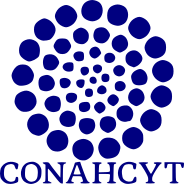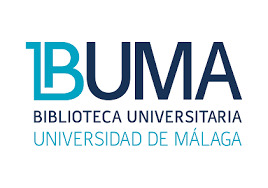In vitro regeneration of Tillandsia takizawae Ehlers & H. Luther
Micropropagación de bromelias
DOI:
https://doi.org/10.18387/polibotanica.57.10Keywords:
Bromeliad, endemic, epiphyte, seed germination, organogenesisAbstract
Tillandsia takizawae Ehlers & H. Luther is an epiphytic bromeliad microendemic from Mexico with showy inflorescences with pink bracts that contrast with the green flowers. These attributes give it potential as an ornamental plant. The conservation of the species and commercial use requires efficient propagation systems that avoid the extraction of plants from their natural habitat. The objectives of this contribution were to establish the optimal conditions for in vitro seed germination and plant regeneration by organogenesis. Seeds were stablished in MS medium with half the concentration of salts added with BA and NAA. In the elongation and rooting of plants, the GA3 and the IBA were evaluated, respectively. In all treatments an average germination of 97% was obtained. The combination of BA and NAA promoted the induction of shoots in recently germinated seedlings. The highest number of shoots per explant was 41.4 with 1 mg L-1 of BA and 0.25 mg L-1 of NAA after 12 weeks of culture. Plant elongation was achieved in the complete MS medium with 1 mg L-1 of GA3 after 8 weeks. The best rooting response was with 1 mg L-1 of IBA at 4 weeks. In the acclimatization of plants the survival was 95 % after 4 weeks.
References
Anis, M., & Ahmad, N. (2016). Plant tissue culture: a journey from research to commercialization. In Anis, M., & Ahmad, N. (Eds.). Plant tissue culture: propagation, conservation and crop improvement (3-13). Springer Science+Business Media. Singapore. https://doi.org/10.1007/978-981-10-1917-3_1
Benzing, D. H. (2000). Bromeliaceae: Profile of an adaptive radiation. Cambridge University Press. United Kingdom. 655 p.
Dal Vesco, L. L., & Guerra, M. P. (2010). In vitro morphogenesis and adventitious shoot mass regeneration of Vriesea reitzii from nodular cultures. Scientia Horticulturae, 125(4), 748-755. http://dx.doi.org/10.1016/j.scienta.2010.05.030
Derio Antonio Jiménez-López, D. A., Solórzano, J. V., Vibrans, H., Espejo-Serna, A., & Peralta-Carreta, C. (2019). Ceremonial use of bromeliads and other vascular epiphytes in cemeteries of two indigenous communities of Las Margaritas, Chiapas, Mexico. Economic Botany, 73 (1), 127-132.
Droste, A., Silva, A. M. D., Matos, A. V., & Almeida, J. W. D. (2005). In vitro culture of Vriesea gigantea and Vriesea philippocoburgii: two vulnerable bromeliads native to Southern Brazil. Brazilian Archives of biology and Technology, 48, 717-722. http://dx.doi.org/10.1590/S1516-89132005000600006
Ehlers, R. (2000). A new Tillandsia from southern Mexico. Journal of the Bromeliad Society, 50, 216-221.
Espejo A., A. & López-Ferrari, A. R. (2018). La familia bromeliaceae en México. Botanical Sciences, 96 (3), 533-554. https://doi.org/10.17129/botsci.1918
García-Martínez, R., & Beutelspacher, C. R. (2022). A new stoloniferous species of Catopsis (Bromeliaceae) from Chiapas, Mexico. Journal of the Bromeliad Society, 72 (3), 119-127.
Guerra, M. P., & Dal Vesco, L. L. (2010). Strategies for the micropropagation of bromeliads. In: Jain S. M., Ochatt S. J. (Eds.). Protocols for in vitro propagation of ornamental plants (589:47-66). Methods in Molecular Biology. Humana Press–Springer, New York. http://dx.doi.org/10.1007/978-1-60327-114-1_6
Hernández-Cárdenas, R. A., Espejo-Serna, A., López-Ferrari, A. R., & Lara-Godínez, S. A. L. (2020). Tillandsia dichromantha (Tillandsioideae; Bromeliaceae), a new species from the state of Oaxaca, Mexico. Phytotaxa, 447 (2), 81-87. https://doi.org/10.11646/phytotaxa.447.2.1
Hernández-Meneses, E., Rangel-Estrada, S. E., López-Peralta, M. C. G., Guerrero-Hilario, A., Ortiz-Gil G., & Martínez-Bolaños, L. (2018). Germinación, viabilidad y regeneración in vitro de plantas de Vriesea heliconioides (Kunth) Hook. Ex Walp. Revista Fitotecnia Mexicana, 41(2), 99-106. https://doi.org/10.35196/rfm.2018.2.99-106
Hietz, P., Winkler, M., Scheffknecht, S., & Hülber, K. (2012). Germination of epiphytic bromeliads in forests and coffee plantations: microclimate and substrate effects. Biotropica, 44(2), 197-204. https://doi.org/10.1111/j.1744-7429.2011.00791.x
Hornung-Leoni, C. T. (2011). Bromeliads: traditional plant food in Latin America since prehispanic times. Polibotánica, 32, 219-229.
Laube, S., & Zotz, G. (2003). Which abiotic factors limit vegetative growth in a vascular epiphyte?. Functional ecology, 17(5), 598-604. https://doi.org/10.1046/j.1365-2435.2003.00760.x
Luther, H. E. (2014). An alphabetical list of bromeliad binomials. 14th edition. The Marie Selby Botanical Gardens and The Bromeliad Society International. Florida, U.S.A. 41 p.
Márquez-Martínez, J., López-Peralta, M. C. G., Hernández-Meneses, E., & Cruz-Huerta, N. (2020). Regeneración in vitro de plantas de Tillandsia viridiflora (beer) baker por organogénesis directa. Agrociencia, 54(6), 763-778. https://doi.org/10.47163/agrociencia.v54i6.2180
Meza-Espinoza, L., García-Magaña, M. L., Vivar-Vera, M.A., Sáyago-Ayerdi, S. G., Chacón-López, A., Becerra-Verdín, E. M., Muy-Rangel, M. D., & Montalvo-González, E. (2017). Aspectos etnobotánicos, nutricionales y actividad biológica de extractos de frutos del género Bromelia. Revista Fitotecnia Mexicana, 40 (4), 425-437.
Mondragón-Chaparro, D. M., Ramírez-Morillo, I. M., Flores-Cruz, M., & García-Franco, J. G. (2011). La familia bromeliaceae en México. Universidad Autónoma Chapingo. México. 100 p.
Murashige, T., & Skoog, F. (1962). A revised medium for rapid growth and bioassays with tabacco tissue cultures. Physiol. Plantarum, 15 (3), 473-493. https://doi.org/10.1111/j.1399-3054.1962.tb08052.x
Phillips, G. C., & Garda, M. (2019). Plant tissue culture media and practices: an overview. In Vitro Cellular & Developmental Biology-Plant, 55, 242-257. https://doi.org/10.1007/s11627-019-09983-5
Pickens, K. A., Affolter, J. M., Wetzstein, H. Y., & Wolf, J. H. (2003). Enhanced seed germination and seedling growth of Tillandsia eizii in vitro. HortScience, 38(1), 101-104. https://doi.org/10.21273/HORTSCI.38.1.101
Pickens, K.A., Wolf, J., Affolter, J.M. & Wetzsteinet, H. Y. (2006). Adventitious bud development and regeneration in Tillandsia eizii. In Vitro Cellular & Developmental Biology-Plant, 42, 348–353. https://doi.org/10.1079/IVP2006779
Pompelli, M. F., & Guerra, M. P. (2005). Micropropagation enables the mass propagation and conservation of Dyckia distachya Hassler. Crop Breeding and Applied Biotechnology, 5(1), 117-126.
SAS Institute (2003) The SAS system for windows. Release 9.1. SAS Institute. Cary, N.C., U.S.A.
Winkler, M., Huelber, K., & Hietz, P. (2005). Effect of canopy position on germination and seedling survival of epiphytic bromeliads in a Mexican humid montane forest. Annals of Botany, 95(6), 1039-1047. https://doi.org/10.1093/aob/mci115
Downloads
Published
Issue
Section
License

Polibotánica by Departamento de Botánica de la Escuela Nacional de Ciencias Biológicas del Instituto Politécnico Nacional se distribuye bajo una Licencia Creative Commons Atribución-NoComercial-CompartirIgual 4.0 Internacional.



















